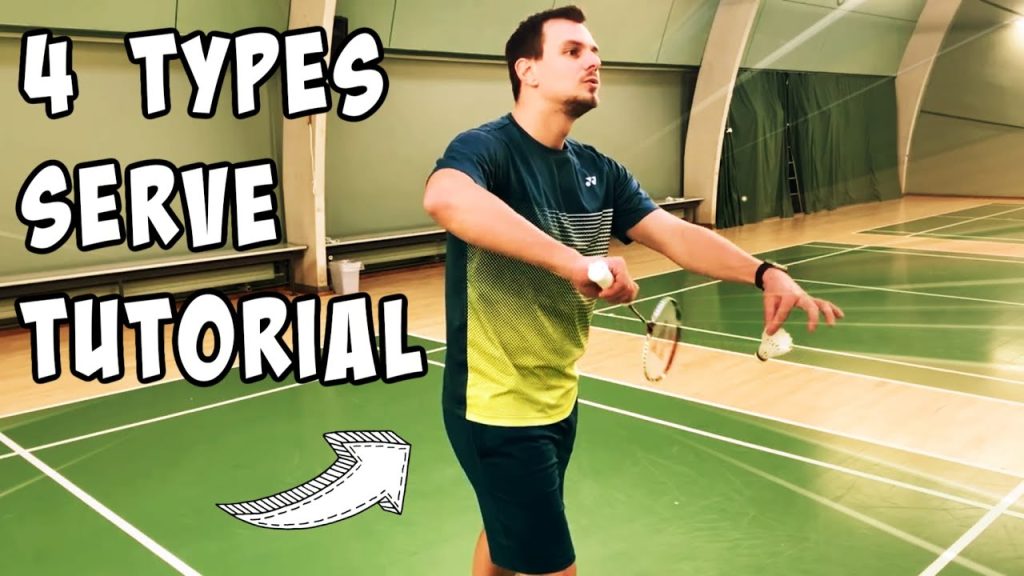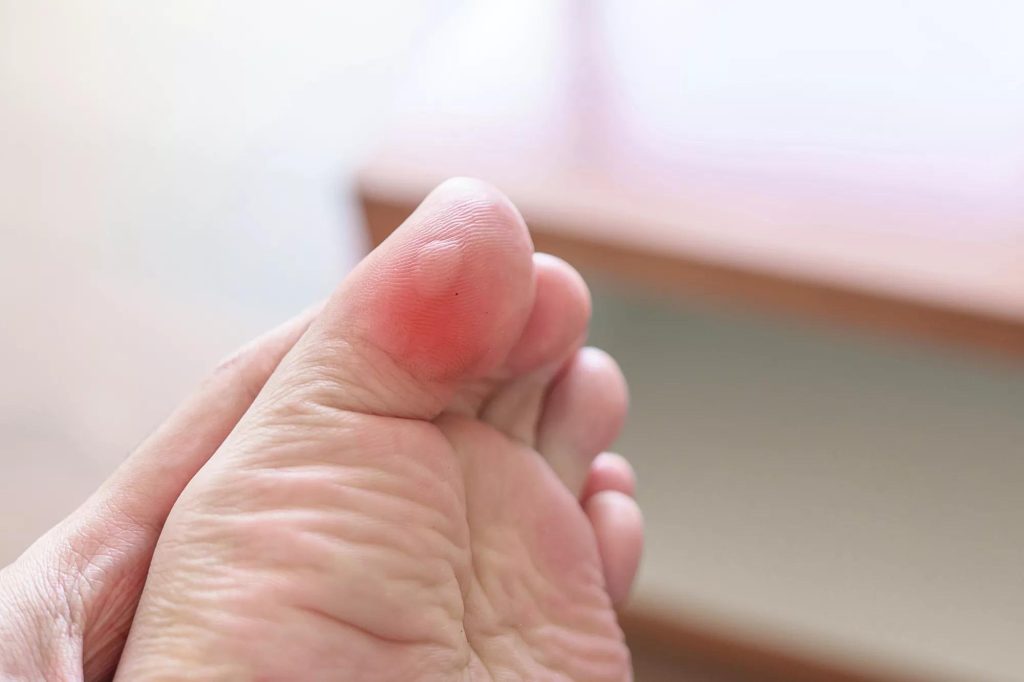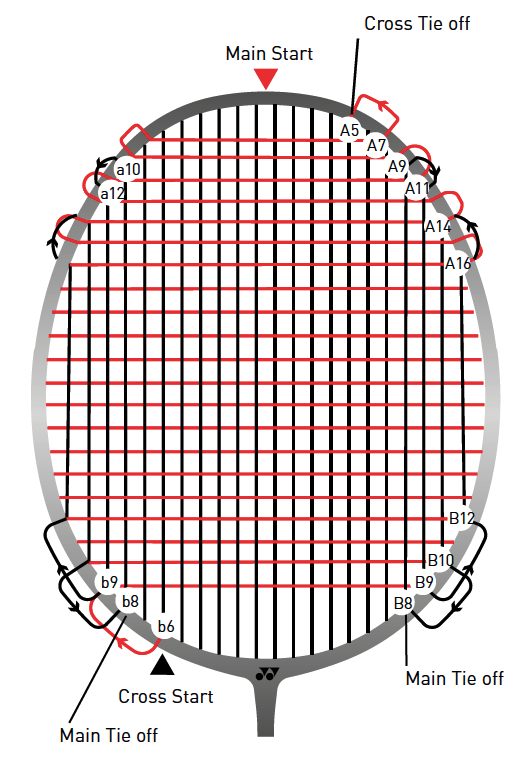Serving in badminton is crucial. It sets the tone for each rally.
A good serve can give you an edge over your opponent. In badminton, knowing how to serve correctly is essential for success. It can determine the flow of the game and put you in a strong position from the start.
Whether you are a beginner or looking to improve your skills, mastering the serve can significantly impact your performance. In this guide, we will explore the basics of serving in badminton, including techniques and tips to help you serve effectively. By understanding and practicing these methods, you can enhance your game and gain confidence on the court. Let’s dive in and learn how to serve like a pro in badminton!

Credit: www.wikihow.com
Introduction To Badminton Serving
Serving in badminton is the start of every point and a crucial skill. A good serve can give you the advantage right from the beginning. It sets the tone for the entire rally. In this section, we will explore the importance of a good serve, the basic rules, and how to get started with serving in badminton.
Importance Of A Good Serve
A good serve is vital in badminton. It can put your opponent on the defensive. The serve determines the flow of the game. Here are some key benefits of a good serve:
- Control: A precise serve can control the pace.
- Pressure: A strong serve can put pressure on the opponent.
- Strategy: It allows you to implement your game plan.
Basic Rules And Regulations
Understanding the rules of serving in badminton is essential. It ensures fair play and avoids penalties. Here are the basic rules:
| Rule | Description |
|---|---|
| Positioning | Both players must be inside their service courts. |
| Serve Height | The shuttlecock must be below the server’s waist. |
| Racket Position | The racket head must be below the server’s hand. |
| Foot Placement | The server must not move their feet during the serve. |
Adhering to these rules ensures a fair and enjoyable game for all players.
Types Of Serves
Serving is a crucial part of badminton. A good serve can give you an advantage in the game. There are different types of serves, each with its own purpose and technique. Knowing these can help you play better.
High Serve
The High Serve is mainly used in singles. The goal is to send the shuttlecock high and deep into the opponent’s court. This makes it hard for them to attack. To perform a high serve:
- Stand with your feet apart.
- Hold the shuttlecock in front of you.
- Hit the shuttlecock with an underhand motion.
- Aim to send it high and deep.
Low Serve
The Low Serve is often used in doubles. It aims to make the shuttlecock barely clear the net. This forces the opponent to lift the shuttlecock, giving you a chance to attack. To perform a low serve:
- Stand closer to the service line.
- Hold the shuttlecock low.
- Use a short, gentle stroke.
- Keep the shuttlecock low over the net.
Flick Serve
The Flick Serve is a surprise move. It looks like a low serve but then the shuttlecock goes high. This can catch your opponent off guard. To perform a flick serve:
- Stand like you are going to do a low serve.
- Hold the shuttlecock low.
- Quickly flick your wrist.
- Send the shuttlecock high and to the back.
Drive Serve
The Drive Serve is a fast and direct serve. It travels flat and quickly to the opponent’s court. This can force a weak return. To perform a drive serve:
- Stand with your feet shoulder-width apart.
- Hold the shuttlecock at waist height.
- Hit the shuttlecock with a flat, fast motion.
- Aim it just over the net.
Grip And Stance
Serving in badminton is a crucial skill. It sets the tone for each rally. Grip and stance are fundamental for a good serve. Understanding these basics can improve your performance.
Proper Grip Techniques
The correct grip is essential for control and power. Hold the racket with a relaxed hand. Position your thumb and index finger in a V-shape. This is known as the forehand grip. Keep your grip loose. Tight grips reduce flexibility and control.
For a backhand serve, change the grip slightly. Move your thumb to the back of the racket handle. This provides better support. Practice switching grips until it feels natural.
Optimal Stance Position
Your stance affects your balance and movement. Stand sideways to the net. Your non-racket foot should point toward the net. Keep your knees slightly bent. This helps with quick movements.
Place your weight on your back foot. Shift it forward as you serve. This adds momentum to your shot. Keep your body relaxed but ready to move. A tense body can lead to errors.
Practice these positions regularly. They will become second nature. With the right grip and stance, your serve will improve.
Executing The High Serve
Executing the high serve in badminton can give you a strong advantage. This serve, aimed to land at the back of the opponent’s court, forces them to move back. It creates the opportunity for you to dictate the pace of the rally. Let’s dive into the key techniques and common mistakes to avoid while executing the high serve.
Key Techniques
Stand with your feet shoulder-width apart. Hold the shuttlecock with the non-dominant hand. Position it at waist height. Use a relaxed grip on the racket. Swing the racket in a smooth, upward motion. Aim to hit the shuttlecock at the lowest point. Follow through with your swing. Ensure your racket points upward after contact. This will help the shuttlecock travel high and deep.
Common Mistakes
Many players grip the racket too tightly. This reduces control and accuracy. Another common mistake is not following through with the swing. This results in a weak serve. Some players also hit the shuttlecock too low. This causes the serve to fall short. Avoid these mistakes by practicing regularly. Pay attention to your form and technique.
Mastering The Low Serve
Mastering the low serve in badminton can give you an edge over your opponents. This serve keeps the shuttlecock low and close to the net, making it hard for your opponent to attack. It’s a skill that requires practice and precision.
Step-by-step Guide
First, stand with your feet shoulder-width apart. Hold the shuttlecock lightly in your non-dominant hand. Your racket should be in your dominant hand, with a relaxed grip. Next, extend your racket arm forward and slightly downward.
Then, drop the shuttlecock and gently push it with your racket. Aim to keep the shuttlecock low and close to the net. Your wrist should be relaxed for better control. The angle of your racket is crucial. It should be almost parallel to the floor.
Improving Accuracy
Focus on your grip and stance. A firm grip helps control the shuttlecock’s direction. Your stance should be stable, with your weight evenly distributed.
Practice your aim by targeting specific spots on the court. Consistent practice will improve your accuracy over time. Watch professional players and learn from their techniques. Notice how they control their wrist and racket angle.
Remember, practice is key. The more you practice, the better you will get. Keep your movements controlled and consistent. This will help you develop a reliable low serve.

Credit: www.wikihow.com
Flick Serve Tips
Mastering the flick serve in badminton can give you an edge over your opponents. This technique, often used during doubles play, surprises the receiver and can force an error. Below, we will discuss how to perfect the flick and when to use it.
Perfecting The Flick
The key to a successful flick serve is the element of surprise. Start with the same stance as a regular serve. Hold the shuttlecock in your non-racket hand, just below shoulder level. Your racket should be at waist height.
As you begin the serve, feign a low serve. This will make your opponent expect a short shuttle. At the last moment, use your wrist to flick the shuttle high and deep. The sudden change in speed and direction can catch your opponent off guard.
Practice is essential. Here are some tips to improve your flick serve:
- Maintain a relaxed grip on the racket.
- Focus on the wrist action for a quick flick.
- Keep your body balanced and stable.
- Vary the flick’s direction and height.
When To Use
Knowing when to use the flick serve is crucial. This serve is best used against opponents who tend to rush the net. If they anticipate a low serve, a flick serve can push them back.
Use the flick serve:
- Early in the game to test your opponent’s reflexes.
- When your opponent is too close to the net.
- If you notice your opponent has a weak backhand.
- To break your opponent’s rhythm.
Remember, variety in serving keeps your opponent guessing. Mix flick serves with low and high serves. This will make it harder for your opponent to predict your next move.
Drive Serve Strategies
The drive serve in badminton is a powerful technique. It can catch your opponent off guard. This serve is fast and low, creating a flat trajectory. Here, we will explore strategies to perfect your drive serve.
Power And Precision
Power and precision are key in a drive serve. Use your wrist to generate speed. A quick flick of the wrist can add power. This helps the shuttlecock travel fast. Make sure to hit the shuttlecock at the right height. This will keep it low over the net.
Precision is equally important. Aim for the sidelines or deep corners. These areas are harder for your opponent to reach. Practice hitting these spots consistently. Over time, you will improve your accuracy.
Game Scenarios
Different game scenarios require different strategies. Use the drive serve when your opponent stands too close. This will make it hard for them to react. The fast and low serve can force a weak return.
Also, use the drive serve in doubles. It can create confusion between partners. They might struggle to decide who will return the shuttlecock. This can give you an advantage. Always analyze your opponent’s position. Adapt your serve to exploit their weaknesses.
Training And Drills
Training and drills are key to improving your badminton serve. Practicing the right way helps build muscle memory and boosts your game performance. Here, we focus on effective drills and the importance of consistency and control.
Effective Practice Drills
Practice drills are essential for refining your serve. They help you develop precision and power. Here are some drills to get started:
- Shadow Practice: Stand in position and practice your serve without the shuttlecock. Focus on your form and technique.
- Target Practice: Place targets on the opposite court. Aim to hit these targets with your serve.
- Consistency Drill: Serve 20 times and count how many land in the target area. Strive to improve your accuracy over time.
Consistency And Control
Consistency and control are vital for a good serve. Here’s how you can improve them:
- Focus on Form: Maintain a consistent stance and grip every time you serve.
- Slow and Steady: Practice slow-motion serves to understand each movement involved.
- Regular Practice: Dedicate time daily to practice your serve. Repetition is key.
Use these drills and tips regularly to see noticeable improvement. Focus on consistency and control to elevate your game.
Advanced Serving Techniques
Mastering the basics of badminton serving can elevate your game. Yet, to truly excel, one must delve into advanced serving techniques. These techniques can catch opponents off guard and gain an advantage.
Deceptive Serves
Deceptive serves are all about tricking your opponent. Use subtle wrist movements to change the shuttle’s direction. This makes it hard for the opponent to predict the serve. Practice different angles and speeds. This adds variety to your serve. A sudden fast serve can surprise your opponent. A slow serve can disrupt their rhythm.
Psychological Tactics
Psychological tactics play a crucial role in serving. Confidence is key. Approach each serve with a confident mindset. Your body language can affect your opponent’s perception. Keep a calm and composed demeanor. Vary your serves to keep your opponent guessing. This creates uncertainty and pressure. Observe your opponent’s weaknesses and exploit them. Adapt your serve based on their reactions.

Credit: www.youtube.com
Frequently Asked Questions
What Is The Correct Way To Serve In Badminton?
The correct way to serve in badminton involves a firm grip, proper stance, and controlled swing. Ensure the shuttlecock is hit below the waist.
How Do You Serve A Powerful Badminton Serve?
To serve powerfully, focus on your wrist movement and aim for precision. Swing with controlled speed and snap your wrist.
What Are The Types Of Serves In Badminton?
There are four main types of serves: high serve, low serve, flick serve, and drive serve. Each serves different strategies.
How To Improve My Badminton Serve Accuracy?
To improve accuracy, practice regularly, focus on your technique, and aim for consistent serving. Adjust your grip and stance.
Conclusion
Mastering the serve in badminton is essential for success. Practice consistently. Focus on your technique. Keep your grip firm and relaxed. Remember to position yourself correctly. Use your wrist to generate power. Watch your opponent’s stance. Adapt your serve to the game situation.
Stay calm and confident. These tips will help improve your serve. Enjoy the game and have fun.



